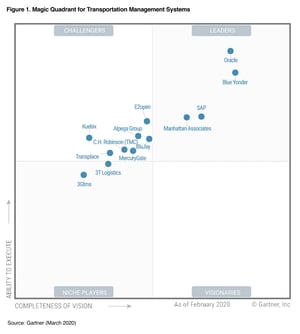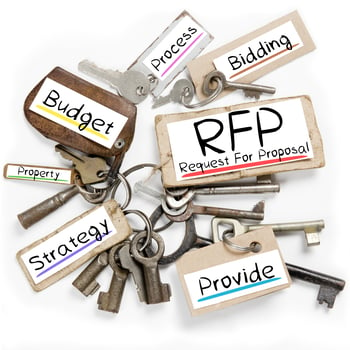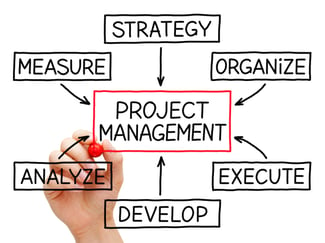
 The cloud TMS evolution has not only brought capabilities that were unthinkable just a few years ago, but it has also opened up the opportunities of companies of all sizes to top ties systems that previously were off limits because of cost.
The cloud TMS evolution has not only brought capabilities that were unthinkable just a few years ago, but it has also opened up the opportunities of companies of all sizes to top ties systems that previously were off limits because of cost.
But with that said, we have seen a trend where companies implementing a TMS struggle coming out of the gate. There are delays in the configuration and implementation process that then carry over into a very difficult go-live that seems to stretch well beyond the original plan.
We believe the miss is happening because the top TMS vendor platforms appear simple based on the value pricing now found with the best cloud TMS systems. The thinking seems to fall into cloud and low cost translates into an out of the box simple platform that can be deployed easily.
 Make no mistake about it, deploying a new transportation management software (TMS) system is a big undertaking for any company. When done right and with one of the highly ranked Gartner Magic Quadrant TMS companies the TMS will touch every discipline within a company to build a best in class supply chain that will drive a competitive advantage.
Make no mistake about it, deploying a new transportation management software (TMS) system is a big undertaking for any company. When done right and with one of the highly ranked Gartner Magic Quadrant TMS companies the TMS will touch every discipline within a company to build a best in class supply chain that will drive a competitive advantage.
With all that said, the intent of this article is to share lessons learned and best practices we’ve seen to be successful over our time of being a TMS reseller and integration partner of MercuryGate.
While none of the twelve best practices we’re about to share guarantee a flawless TMS deployment success, they do significantly improve the odds of success.
Top 12 TMS Implementation Best Practices
Define Business Goals
Requirements Document
Understand Your Teams Strength & Weaknesses
Find a Trusted Implementation Partner
Detailed Implementation Plan
Focus on Communication
Embrace Failures
Have Patience - Know Limitations
Don’t Take on Too Much at the Start, but Not Limiting
Full Company & Discipline Involvement
Solid Testing Plan & Execution
Train, Train, Train
Let’s now take a deeper dive into the twelve TMS implementation best practices to help your organization be successful in its TMS launch.
Define Current Situation & the Goals to Achieve
![]() As with building any physical structure, a strong foundation needs to be established to ensure the structure will stand the test of time. The same holds true for a successful TMS deployment.
As with building any physical structure, a strong foundation needs to be established to ensure the structure will stand the test of time. The same holds true for a successful TMS deployment.
Far too often we see companies jump quickly to the TMS vendor they believe is the best for them, then on the first day they get a few logins they put their hands on the keyboard and start working in the system.
Instead, the team needs to start by understanding the current pain points with their supply chains processes today and set clear performance indicators that they intend to improve with the next TMS.
As part of this process, it is imperative to include all the disciplines of the company because a TMS is not just about freight, but instead the way a company interfaces with its vendors through production and then ultimately with its customers.
As such, finance, purchasing, sales, customer service, production & manufacturing and logistics teams need to discuss and align the strategic direction they want to go together. The critical order-to-cash cycle of a company will depend on including everyone in the groups just listed, as their work helps to transform purchased raw goods into products that are then delivered to customers.
Requirements Document
 There is even more to the thought process of companies putting the cart before the horse we discussed previously and it is about doing critical upfront work required to determine the best system for their company.
There is even more to the thought process of companies putting the cart before the horse we discussed previously and it is about doing critical upfront work required to determine the best system for their company.
It is imperative for the TMS project team to assemble the flow diagrams that visualizes the current operational process and illustrates the success points, areas of stress and complete breaks with the corporate goals of service and price.
With the current flows mapped out with its pluses and minuses highlighted, the TMS project team should then assemble processes they require for their company’s future success.
Once the future process requirements are mapped and outlined, the project team should then assemble a TMS RFP that encompasses the current and future requirements.
Each of the requirements should be given a score, so when the responses come back from the TMS software vendors and implementation partners they can be given a weighted score to find the objective answer to the best TMS fit for your business.
If a team does nothing else, we implore companies to not shortchange themselves on the RFP step. The ramifications of buying the flash and not the requirements can be crippling.
Understand Your Teams Strengths & Weaknesses
While the project lead is critical, this is not a one person job.
Successful TMS projects have the characteristic of putting the best people on the team, knowing that it will be painful short-term but is essential for long-term success.
A quick note to add is because a TMS deployment is a big endeavour it has the potential to be a distraction to your current business. As such, be mindful of this potential pitfall in your resource planning and assignment.
Find a Trusted Implementation Partner
 While a strong team is important, it often cannot carry the full load of everything that needs to be accomplished for a successful TMS project, while also conducting its current business.
While a strong team is important, it often cannot carry the full load of everything that needs to be accomplished for a successful TMS project, while also conducting its current business.
To cover the short-term resource gap often found in larger TMS implementations it is important to hire a third party resource that brings with them talent, lessons learned, industry best practices and tribal knowledge.
We know there will be pushback from the financially conscious leadership, but that should not deter the team. By investing in a proven implementation partner you will be more successful in keeping the project on-target for fewer budget overruns, delays and a much quicker ROI to your company.
Not just any partner will do, so ask your TMS vendor who they would recommend.
Detailed Project Plan
 A well thought out project plan with dates, those responsible for the task and contingencies is important to the success of a TMS rollout.
A well thought out project plan with dates, those responsible for the task and contingencies is important to the success of a TMS rollout.
Spend the money and get a strong project management software program to keep people on task and on time. The project program should have the ability to store documentation and facilitate communication on current and new issues throughout the project cycle.
We’d recommend continuing the use of the platform to be that of a help desk platform for users to document issues that would then be assigned to the appropriate IT resource to research and correct.
Focus on Communication to All
 It is worth repeating a TMS deployment affects all departments making communication critical. Do not make the mistake of thinking a TMS implementation is an IT and Logistics & Supply Chain Department Project.
It is worth repeating a TMS deployment affects all departments making communication critical. Do not make the mistake of thinking a TMS implementation is an IT and Logistics & Supply Chain Department Project.
Regardless of whether a TMS deployment is on premises or in the cloud, employees need to know how the software changes will affect their jobs and then be trained on the new tools. This can go a long way toward determining how effectively users adopt a new system and the launch is successful.
As mentioned previously, a project management software platform is a tremendous tool for communication among direct project TMS team members, but there is more to communication. Don’t forget to incorporate formal communication and provide mechanisms throughout the project to encourage informal communication.
The reason for pointing out the informal communication is that some of the best ideas and issues come from an informal exchange. In larger organizations or one with a remote workforce the project leaders need to find ways to facilitate the informal communication opportunities to draw out these great ideas or potential pitfalls.
Embrace Failures
 Attempting to prevent TMS implementation failure of the overall project is a no-brainer.
Attempting to prevent TMS implementation failure of the overall project is a no-brainer.
No organization wants to spend thousands and thousands of dollars on a TMS deployment only to find the software is dead on arrival.
How can one prevent and embrace failure at the same time? The answer is figure it out because failure will happen.
How an organization responds to failures will help to determine how effective the new TMS system ultimately becomes for the organization.
The backchannel chatter can be strong and folks that are resistant to change will sense the cracks, which they will try to wedge their desires to stay the same old course. Your team cannot let this happen, so be positive and communicative when the small failures come and then go when corrected.

Have Patience - Know Limitations
Today’s business processes are extremely complex with multiple touch and contingency points. Add to it, companies have significantly more applications and systems it's relying on, then in years past to get the job done.
Like a racecar driver there are times to push on the accelerator and other times to hold back. Knowing the limitations and exercising patience when it is needed will improve your TMS deployment success.
As part of this discussion, let’s also add there will be pressures to deliver the project on-time and on budget. Do not succumb to the full court press in this area. Stay the course and be patient because more times than not a suboptimal result will occur if the main point is on-time and on budget. The most successful project will be a solid, game changing supply chain.
Also, remember when the on-time and on budget people are yelling from the rooftops also will not be the ones that lose their jobs because the supply chain is doing only a quarter of what it needs to be doing to keep the business moving forward.
Keep the focus, deliver a consistent message on the project’s progress (not over or under selling) and know that while it may cost a little more upfront than planned, it will save more money than projected once in full motion.
Don’t Take on Too Much at the Start, but Not Limiting
 Similar, but different to patience and limitations comments is the overall thought of not trying to do everything at once.
Similar, but different to patience and limitations comments is the overall thought of not trying to do everything at once.
As they say, Rome was not built in a day … and neither will the best supply chain, so don’t be tempted to put all the bells and whistles in on go-live day.
Knowing the limits is not just a go-live problem, but also a project issue. Too many moving parts can overwhelm the team in trying to lock down the variables that are causing issues and the end result often causes bad decisions to compound upon themselves.
All said, many companies rush into rolling out so many new functions without careful consideration of the overall impact. So, our recommendation is to go somewhat vanilla out of the gate and gradually bring in the game changers in a methodical way. Yes, the ROI will be a bit slower, but not to worry. This is a marathon, not a sprint.
Full Company & Discipline Involvement
We have covered this same topic in different ways through the course of this article and we’ll hit it from another angle.
If your company is installing the “right” transportation management software system, it will be a game changer that will touch every discipline in your company. As such, the project team needs to involve all departments and department heads to flush out issues, concerns, visions, etc.
If you pull nothing else from this article, pull out the fact that your TMS project team needs to work across disciplines to maximize the effect and its success.of your new TMS.
Solid Testing Plan & Execution
 There are several forms of testing: end-to-end testing, user acceptance testing and stress testing.
There are several forms of testing: end-to-end testing, user acceptance testing and stress testing.
To ensure the TMS system meets your company's business requirements before go-live, you will have multiple types of testing procedures. All of the testing types are important and serve a specific function in their purpose.
End-to-End Tests
End to end testing (E2E testing) refers to a software testing method that involves testing an application’s workflow from beginning to end. This test aims to replicate real user scenarios, so that the system can be validated for integration and data integrity.
User Acceptance Tests
User Acceptance Testing (UAT) is the final stage of any software development life cycle. This is when actual users test the software to see if it is able to carry out the required tasks it was designed to address in real-world situations. UAT tests adherence to your business requirements. UAT testers aim to validate processes against original requirements.
Stress Tests
Stress testing is a type of testing that validates the stability and reliability of the system under extremely heavy load conditions. This test is done to make sure the system will not crash under your busy times in a given day or in given seasonal business patterns.
Each of these testing methods has its place, so do not cut corners, as it is critical to a successful deployment of a transportation management system.

Train, Train and Train
When planning your TMS rollout, it’s important to also assemble a training schedule.
We would recommend having both asynchronous and synchronous training sessions, in addition to having written documentation for key functionality.
The reason for the three recommendations is people have different learning styles.
It is important to ensure training is timely, effective and verifiable that the skillsets are being learned to be an effective worker on the new TMS being installed. Missing any of these points will make for a tremendously rough go-live phase of the project.
Next Steps
 Now that we have gone through the keys to a successful TMS implementation,, we recommend vetting out other resources to help you along the way.
Now that we have gone through the keys to a successful TMS implementation,, we recommend vetting out other resources to help you along the way.
A strong implementation partner can be found by asking your TMS vendor for recommendations. If you are interested in the MercuryGate TMS, we would love to be a part of the conversation.
InTek is a Certified Reseller of the MercuryGate Cloud TMS, which is consistently ranked as a top 5 TMS in the market by Gartner in their Magic Quadrant Analysis.
Other TMS System Articles that May Be of Interest:
- A Complete Guide to TMS Freight Software: Market Capabilities and Solutions for Shippers
- Should Your Company Purchase & Implement a TMS System During COVID-19?
- MercuryGate Certified Integrator Channel Partner: Benefits & Value
- Top 6 Cloud TMS Implementation Challenges During COVID-19
- Best Transportation Management System (TMS) Software Packages
- Top 10 Transportation Management Software (TMS) Implementation Pitfalls to Avoid
- TMS RFP Template
- Gartner’s Magic Quadrant Analysis Key to TMS Buying Selection Process
If you're ready to take the next step, at InTek Freight & Logistics, we can help. Just tell us what you need and we'll discuss how our expertise can help with the unique shipping challenges your business faces. Rather do a bit more research first? View our Freight Guides for comprehensive articles and eBooks on all things freight and logistics.
Get Updates
Featured Articles
Categories
- Freight & Shipping Costs (53)
- Freight Broker (58)
- Freight Forwarder (2)
- Intermodal Transportation (182)
- International & Cross Border Logistics (43)
- Logistics & Supply Chain (415)
- Logistics Service Provider (76)
- LTL (39)
- Managed TMS (49)
- News (38)
- Supply Chain Sustainability (12)
- Transportation Management System (37)
- Truckload (121)
- Warehousing & Distribution (49)




